#paradoxurus
Text
Uncharismatic Fact of the Day
Asian palm civets are most widely known for their production of coffee beans for Kopi Luwak coffee, but they're also associated with another, equally popular drink: the toddy! The toddy cat also feeds on palm flower sap, which when fermented becomes a sweet liquor known as toddy which gives this cat its name.
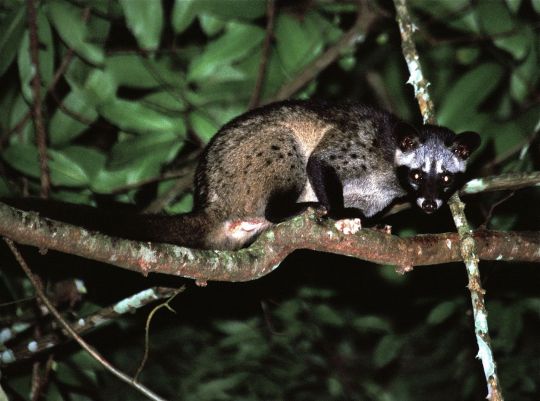
(Image: An Asian palm civet (Paradoxurus hermaphroditus) by Bernard Dupont via Wikimedia Commons)
If you send me proof that you’ve made a donation to UNRWA or another organization benefiting Palestinians, I’ll make art of any animal of your choosing.
62 notes
·
View notes
Text
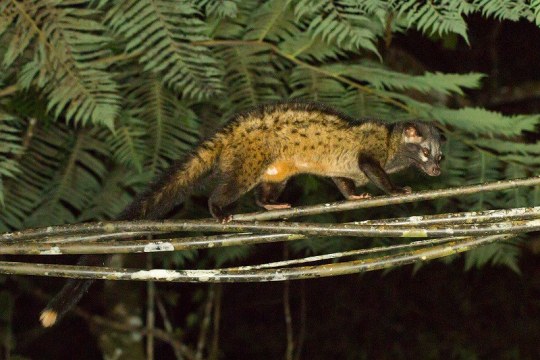

Asian palm civet (Paradoxurus hermaphroditus)
Fraser's Hill, Pahang, Malaysia
Photos [1, 2] © David
2K notes
·
View notes
Text
Animal of the Day!
Common Palm Civet (Paradoxurus hermaphroditus)

(Photo from Animal Spot)
Conservation Status- Least Concern
Habitat- Southeast Asia
Size (Weight/Length)- 3 kg; 51 cm
Diet- Fruits; Insects; Small mammals
Cool Facts- The solitary common palm civet is a nocturnal little guy. Spending time both on the ground and in trees, they search for food at night and sleep in trees during the day. Preferring fruits, palm civets will scale massive trees to reach food that larger animals, such as monkeys, can’t reach. After eating the fruit it spreads seeds far and wide, playing a vital role in the jungle ecosystem. As a defense mechanism, the common palm civet emits a horrible smell that makes most predators think twice before trying to take down these adorable critters.
Rating- 11/10 (An Asian, climbing, stripeless skunk.)
#Animal of the day#Animals#Mammals#Civet#Friday#September 30#Common palm civet#biology#science#conservation#the more you know
89 notes
·
View notes
Quote
ゾウに限らず、動物の糞から採取されたコーヒー豆が今、注目を集めている。ブラジルには、南米原産のカオグロナキシャクケイ(Pipile jacutinga)と呼ばれる絶滅危惧種の鳥の糞から取り出し、洗浄、焙煎したコーヒー豆がある。また、糞ではないが、サルが実を食べた後吐き出した種子を集めて焙煎したものもある。
しかし、「自然に精製」されたコーヒー豆として最もよく知られているのは、パームシベット(Paradoxurus hermaphroditus)という動物の糞から採取された「コピ・ルアク」だ。
孤独を好み足の短いパームシベットはジャコウネコ科ハクビシン亜科の仲間で、東南アジアが原産だ。その糞から採取されたコーヒー豆は、数十年前から存在する。ナショナル ジオグラフィックが初めてこれを報道したのは1981年だったが、その後も反響を呼び続け、需要が拡大した。
1杯1万円にも、ジャコウネコなどの糞で作るコーヒーの「闇」 | ナショナル ジオグラフィック日本版サイト
4 notes
·
View notes
Text
There is an amazing animal which has a name which sounds super weird

Just look at it
Why do the scientists call it paradoxurus hermaphroditus
What paradox does it hide
2 notes
·
View notes
Text
The King of Fruits is in season now and Durian connoisseurs in Singapore are crowding the stalls and shops all over the island nation hunting for the heavenly smelling fruit. For most of them, they are there for the Mao Shan Wang (MSW) or 猫山王, also known as the Musang King. Its original clone identity is D197 but having a catchy name tag to it make it far more attractive, not that it isn’t already so. Why call it Mao Shan Wang which literally translates to Cat Mountain King? Well, the mountain where the MSW durians originated is home to many civet cats or Asian palm civet (Paradoxurus hermaphroditus).

My brother brought over three boxes of Mao Shan Wang (猫山王) durians which is currently retailing at S$12 per kilogram (thorny shells included) due to the bountiful harvest. Why are people so passionate over it? Nothing triumphs like the Mao Shan Wang because they are the creamiest, richest, most buttery and bittersweet durians compared to all other durian varieties. MSW balances just the right profile of bitterness and sweetness. Even the seeds are small and flat which mean more flesh to seed ration.


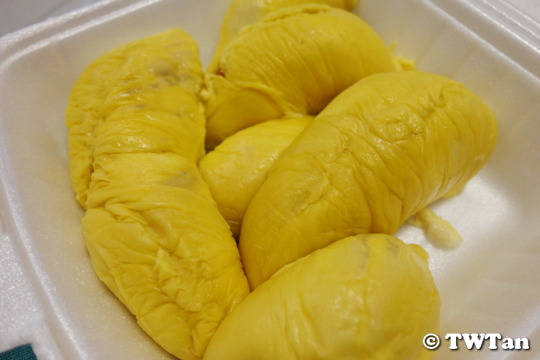

Topmost image from here.
#Durian#榴莲#King of Fruits#Mao Shan Wang#MSW#猫山王#Musang King#Cat Mountain King#Strong Smelling#Pungent#Sweet#Creamy#Buttery#Bittersweet#Seed#Flat#Snack#Food#Buffetlicious
9 notes
·
View notes
Text
กาแฟขี้ชะมด
กาแฟขี้ชะมด ความลับเบื้องหลังกาแฟแพงที่สุดในโลก
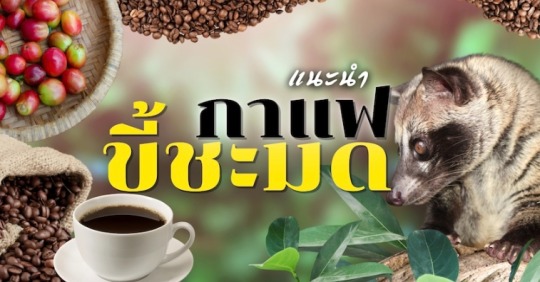
ใครๆ ก็รู้ว่าโกปิลูวัก หรือ กาแฟขี้ชะมด นั้นทำมาจากอึของชะมด ซึ่งเป็นความโชคร้ายของมัน (จริงๆ แล้วโกปิลูวักมาจากอึของอีเห็นข้างลายที่มีชื่อวิทยาศาสตร์ว่า Paradoxurus hermaphroditus หรืออีเห็นธรรมดา อยู่ในวงศ์ชะมดและอีเห็น แต่กาแฟขี้ชะมดเป็นชื่อเรียกที่รู้จักกันในท้องตลาด)
มันเป็นทั้งกาแฟแพงที่สุดในโลกและทำมาจากอึ หรือจะพูดให้ถูกคือทำจากเมล็ดกาแฟที่ถูกย่อยบางส่วนแล้วอึออกมาโดยชะมด สัตว์เลี้ยงลูกด้วยนมคล้ายแมว เท่าที่รู้กัน “โกปิลูกวัก” หนึ่งถ้วยขายในสหรัฐอเมริการาคาราว 2,600 บาท
ชะมดมีหางยาวเหมือนลิง หน้ามีลายคล้ายแร็กคูน บนตัวมีลายยาวหรือลายจุด พบได้ในเอเชียตะวันออกเฉียงใต้และแอฟริกาทางตอนใต้ของทะเลทรายสะฮารา ชะมดมีบทบาทสำคัญในห่วงโซ่อาหารเพราะมันกินแมลงและสัตว์เล��้อยคลานขนาดเล็ก นอกเหนือจากผลไม้อย่างผลกาแฟกับมะม่วง ในขณะเดียวกันมันก็ถูกเสือดาว งูตัวใหญ่ๆ และจระเข้กินด้วย

ตอนแรกๆ การค้ากาแฟขี้ชะมดทำท่าจะดีต่อสัตว์อย่างชะมดอยู่เหมือนกัน ในอินโดนีเซีย ชะมด ซึ่งเป็นสัตว์วงศ์เดียวกับอีเห็น มักบุกเข้าไปกินผลไม้ที่ชาวบ้านปลูกเอาไว้ขาย มันจึงถูกมองเป็นศัตรูพืช ดังนั้นการเติบโตของอุตสาหกรรมโกปิลูวัก จึงส่งเสริมให้คนท้องถิ่นปกป้องชะมดเพราะอึของมันมีค่า เอ็นไซม์ย่อยอาหารของชะมดเปลี่ยนโครงสร้างโปรตีนในเมล็ดกาแฟ ซึ่งกำจัดความเป็นกรดบางส่วนออก ทำให้ได้กาแฟรสชาตินุ่มนวลขึ้น
แต่เมื่อกาแฟขี้ชะมดเริ่มโด่งดังไปพร้อมกับที่อินโดนีเซียกลายเป็นจุดหมายปลายทางของนักท่องเที่ยวที่อยากมาเยือนและมีปฏิสัมพันธ์กับสัตว์ป่า ชะมดที่เคยอยู่ป่าก็ถูกจับมาขังในไร่กาแฟมากขึ้นเรื่อยๆ ส่วนหนึ่งเพื่อใช้ในการผลิตกาแฟ อีกส่วนก็เพื่อทำเงินจากนักท่องเที่ยวที่มายืนจ้องพวกมัน
นักวิจัยจากหน่วยวิจัยการอนุรักษ์สัตว์ป่า มหาวิทยาลัยออกซฟอร์ด และองค์กรไม่แสวงหาผลกำไร World Animal Protection ซึ่งมีสำนักงานในลอนดอน ประเมินสภาพความเป็นอยู่ของชะมดป่า 50 ตัวที่ขังอยู่ในกรงที่ไร่กาแฟ 16 แห่งในบาหลี และรายงานผลในวารสาร Animal Welfare ฉายให้เห็นภาพน่าอเนจอนาถ

ไร่กาแฟทุกแห่งที่นักวิจัยไปเก็บข้อมูล ไม่มีแห่งใดเลยที่จะใส่ใจสวัสดิภาพของสัตว์ ตั้งแต่ขนาดและความสะอาดของกรง จนถึงความสามารถที่ชะมดจะใช้ชีวิตเยี่ยงชะมดปรกติ “บางกรงเล็กมากๆ จนเรียกว่าเป็นกรงกระต่ายก็ได้ แถมยังเปียกชุ่มด้วยฉี่และอึไปทั่ว” นีล ดิครูซ หนึ่งในทีมนักวิจัยกล่าว
ชะมดบางตัวผอมมากเนื่องจากถูกเลี้ยงด้วยอาหารอันจำกัดคือผลกาแฟเท่านั้น สิ่งที่ร่างกายมันได้รับคือผลที่ห่อหุ้มเมล็ดกาแฟ บางตัวก็อ้วนเกินเพราะไม่เคยได้เคลื่อนไหวอย่างเป็นอิสระ บางตัวก็ถูกกระตุ้นด้วยคาเฟอีน ดิครูซเล่า
แต่ที่น่าหดหู่ที่สุดก็คือพื้นกรงที่ทำจากลวดสานกันเป็นตาข่าย บังคับให้ชะมดต้องยืน นั่ง นอนอยู่ตรงนั้นตลอดเวลา “ถ้าหากคุณต้องยืนบนลวดที่สานกันแบบนั้นตลอดเวลา มันจะทำให้คุณเป็นแผลและมีรอยขีดข่วน” ชะมดไม่สามารถหนีพ้นจากพื้นชนิดที่ว่าได้เลย ดิครูซกล่าวว่า “มันสร้างความเจ็บปวดตลอดเวลาและรุนแรง”
ยิ่งไปกว่านั้น ชะมดจำนวนมากไม่มีน้ำสะอาดกินและไม่มีโอกาสจะมีปฏิสัมพันธ์กับชะมดตัวอื่น ชะมดเป็นสัตว์หากินกลางคืน แต่มันต้องอยู่ในที่โล่งตลอดเวลาในเวลากลางวัน และต้องเผชิญกับเสียงดังจากการจราจรและนักท่องเที่ยวอีกด้วย
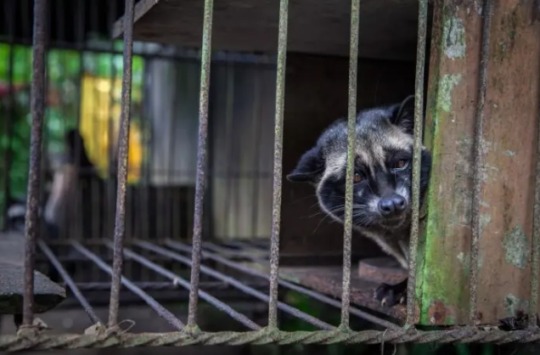
ขี้ชะมดป่าหรือขี้ชะมดกรง ไม่มีใครรู้แน่
ผู้เชี่ยวชาญบอกว่าอย่างหนึ่งที่ทำให้โกปิลูวักพิเศษ ก็เพราะชะมดป่าเลือกผลกาแฟคุณภาพดีกิน เมื่อขังชะมดไว้ในกรงแล้วเลี้ยงมันแต่ผลกาแฟเก่าๆ ผลที่ได้ก็จะมีคุณภาพต่ำไปด้วย นอกจากนี้ ผู้เชี่ยวชาญด้านกาแฟคนหนึ่งเคยกล่าวไว้ในบทความของ Specialty Coffee Association of America องค์การการค้ากาแฟของผู้คั่วกาแฟกรูเมต์และบาริสตาว่า โกปิลูกวัก ไม่ได้ดีอย่างที่ว่ากัน ถึงแม้ว่ากระบวนการย่อยอาหารของชะมดจะทำให้กาแฟนุ่มนวลขึ้น แต่มันก็ทำลายกรดและกลิ่นที่บอกลักษณะกาแฟชั้นดีออกไปด้วย
ปัจจุบันไม่มีใครบอกได้ว่ากาแฟโกปิลูวักถุงใดที่มาจากชะมดป่าหรือชะมดกรง เมื่อปี 2013 บีบีซีเคยเปิดโปงความไร้มนุษยธรรมในการผลิตกาแฟจากชะมดในกรงขัง จนยุโรปต้องออกกฎติดฉลากกาแฟที่มาจากชะมดป่า แม้แต่ผู้ค้ากาแฟอย่าง โทนี ไวลด์ ซึ่งแนะนำโกปิลูวักให้ชาวตะวันตกได้รู้จัก ก็ต่อต้านเรื่องนี้ในบทความที่ตีพิมพ์ใน Guardian เขากล่าวว่ามันกลายเป็นอุตสาหกรรม ทารุณ และจอมปลอม
อย่างไรก็ตาม ไม่มีการรับรองใดๆ ที่จะทำให้ผู้ซื้อมั่นใจได้ว่ากาแฟที่ติดฉลากขี้ชะมด “ป่า” จะเชื่อถือได้ และผู้รับรองกาแฟที่กำลังทำงานเพื่อให้ผู้ผลิตรับผิดชอบต่อสิ่งแวดล้อมก็ปฏิเสธจะออกใบรับรองกับกาแฟขี้ชะมดยี่ห้อใดๆ ตามมาตรฐานเครือข่ายเกษตรกรรมยั่งยืน (Sustainable Agriculture Network-SAN) ของพันธมิตรป่าฝนและผู้รับรองอื่นๆ ที่มีชื่อเสียงซึ่งใช้ในการออกตราประทับรับรองห้ามการล่าและจับสัตว์ป่าในการทำเกษตร การห้ามชะมดกรงเป็นแนวทางที่ถูกพูดถึงเป็นพิเศษในกรณีของกาแฟจากอินโดนีเซีย ส่วนมาตรฐานการรับรองกาแฟยั่งยืน UTZ ก็ห้ามขังสัตว์ป่าเพื่อการเกษตรเช่นกันและไม่รับรองโกปิลูวักใดๆ ทั้งสิ้น
อเล็กซ์ มอร์แกน จากพันธมิตรป่าฝนซึ่งใช้มาตรฐาน SAN ระบุว่ามันเสี่ยงเกินไปที่จะรับรองโกปิลูวัก เพราะมันยากมากที่จะรับรองว่าเมล็ดกาแฟมาจากธรรมชาติร้อยเปอร์เซนต์หรือไม่ “ความเห็นส่วนตัวของผมคือจงหลีกเลี่ยงมัน” มอร์แกนกล่าว “ส่วนใหญ่มันมักจะมากจากถิ่นที่ผลิตกาแฟด้วยการขังชะมดทั้งนั้น”
หวยหุ้นดาวโจนส์
0 notes
Text
Historia paru łasz - cz. I
Dodano: 2007-12-13 20:27:14
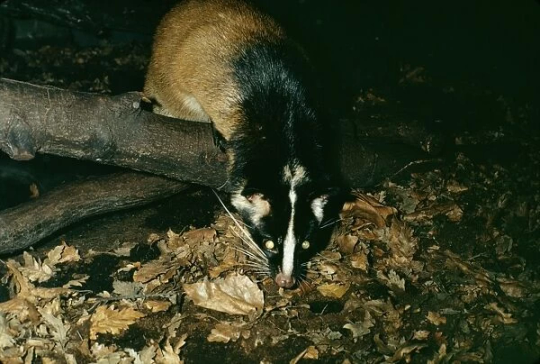
Ziemia jest mieszkaniem masy rzadkich ssaków. Szczególnym mistycznym zagadnieniem otacza się pewną rodzinę ssaków drapieżnych - zwiemy je tajemniczymi łaszami. Są to zwierzęta niespotykanie ciche i niepospolicie niezwykłe. W systematyce zoologicznej podzielone je na trzy rodziny. Żyje wśród nich pewien rybożer, zwierz nader skromny i nieprzenikliwy. W lasach to wybitnie nocne ziemnowodne zwierzę (a może aktywny jest także w dzień?) czatuje na swoje ofiary. Nie tylko nigdy nie nakręcono o nim filmu, ale i także nie wiadomo czy już nie wymarł. Zamieszkuje on dorzecze północnowschodniego Zairu, nie w Kongo jak niektórzy podają. Wyposażony w błony pławne i długi czarny ogon czatuje na ryby i wodne bezkręgowce. Ma krótkie nogi przednie i lisi pysk. To łasza z grupy wiwer. Nie wiadomo nic o jej zachowaniu, rozrodzie i trybie życia. W lasach Afryki żyje także łasza palmowa, ssak z rodziny Nandiniidae. Na Madagaskarze żyją fossy, fanaloki i falanruki. Tam też wspomina się o innych nieznanych łaszach na dla nauki - bokyboky. Viverridae to carnivory starego świata, nie występują w obu Amerykach. Największa ich radiacja grup rodzajowych zaistniała jednak w Azji Południowo-wschodniej. Tu żyje łaskun muzang, który wytwarza jedyne na świecie specyficzne produkty do najdroższej kawy świata - kopi luwak. Ale są jeszcze inne łasze, jeszcze bardziej tajemnicze i mniej poznane.
Paradoxurus hermaphroditus
Nie wiem czy wolno tu mi o nich mówić. Wiele z nich przyprawia o ból głowy i działa na neurony. Istnieje kunołaz laotański Owstona o długiej czaszce z pręgami na ciele. To zwierzę prowadzi naziemny tryb życia, gdzie żywi się dzdżownicami. Wydziela on jednak bardzo silny zapach z gruczołów okołodbytowych odstraszający wrogów. Do jego krewnych należy kunołaz pręgowany Hemigalus derbyanus z żółtymi, hipnotyzującymi ślepiami. On też ma wydłużoną czaszkę, przez twarz od potylicy, aż do płytki nosowej ciągnie się czarna pręga. Zwierz przyjmuje kremową sierść pokrytą pasami brązowej sierści. Wśród cywet z rodzaju Viverra, istnieją wspaniale barwne gatunki, wśród nich wiele pojawiło się w nauce jako okazy typowe. Jest też pewne grono tych ssaków, bez wyglądu. są to ssaki, o których nie wiemy jak wyglądają. O nich jednak nie powiem, tak prawdziwie to niezwykłe gatunki, że zahaczają o kryptozoologię.
Wśród zakonspirowanych gatunków jest żeneta królewska znana jedynie z 10 okazów. Od wielu lat się o niej nie mówi, toż też może być już wymarła.
W planach przeglądu tych drapieżników natrafiamy na wielkogłowego łaskuna brązowego z Sulawesi - o sylwetce kota. Fossa drapieżna na Madagaskarze, przyjmuje formę niszową dużych kotów, których nie ma w tej częsci śwaita. Żyje na drzewach i wykonuje dalekie skoki z jednej gałęzi na gałąz. W lasach Azji żyją niedźwiedziopodobny granatowy binturong drzewny z pędzelkami na uszach, kunołaz czarnobiały Diplogale hosei - ten który miał być kotolisem z Borneo. Jego to nie widziano od ponad 50 lat. Ba, nigdy go ponoć na żywo nie widział żaden biały.
Nandinia binotata
Trzy lata temu zrobio mu pierwsze zdjęcia, aparatem superświatłoczułym na ruch i temperaturę. W odludnych lasach Palni, Nilgiri i Anamalai hills, Travancore oraz Coorg w Ghatach Zachodnich żyje łaskun Jerdona (krewny łaskuna muzanga) podobny do łaskuna złotego, endemiczny ssak, zwierzę, które nie rozumie wiary w śmierć i zmartwychwstanie. Żywiąc się owadami, ptakami i gryzoniami upodobał sobie zaciszne miejsca, czyhając tylko na swe ofiary. Czy i w innych lasach kroją sobie myśli ich ofiary a z nimi inne jeszcze gatunki, które nie czują pociągu do czegoś z tego świata?
Opracował: Caniche
0 notes
Text
The week in wildlife – in pictures | Environment#week #wildlife #pictures #Environment
A wild Asian palm civet (Paradoxurus hermaphroditus) is spotted in a weak and exhausted semi-conscious state in the bushes of parthenium plants at Tehatta, West Bengal, India. The Asian palm civet, a nocturnal carnivore species also known as the common palm civet, toddy cat, and musang, is found in south and south-east Asia, it produces a buttery, honey-like secretion that is scraped off its…
View On WordPress
0 notes
Photo

Paradoxurus philippinensis
#asian palm civet#musang#civet#paradoxurus#philippinensis#viverridae#carnivora#mammalia#chordata#animalia#unassessed#asia#southeast asia#indonesia#philippines#terrestrial#forest#needs research#thefaunalfrontier#the faunal frontier
70 notes
·
View notes
Text
One animal from A-Z: A
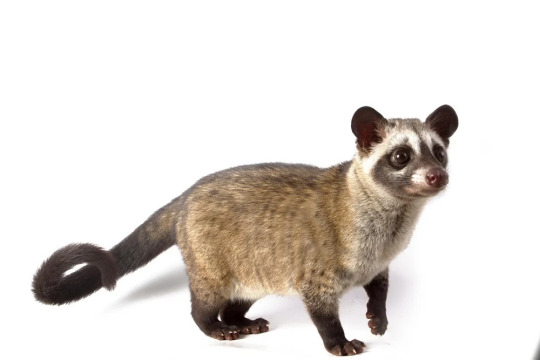
Asian Palm Civet (Paradoxurus hermaphroditus)
#a-z#one animal from a-z#mammal#asain palm civet#animals#land animals#wildlife#wild animals#zoo animals#furred#animal#cute animals#cute#nature#photography#paradoxurus hermaphroditus
2 notes
·
View notes
Text

Asian palm civet (Paradoxurus hermaphroditus)
Tadoba-Andhari National Park, Maharashtra, India
Photo © Atul Dhamankar
388 notes
·
View notes
Photo

An Asian palm civet. Native to indonesia, they are threatened by poaching, and the illegal wildlife trade. Buyers use these viverrids for the production of kopi luwak, a high end coffee made from the feces of the civet.
x
1 note
·
View note
Text
Nerding Out Over Masting, or Why Unusual Plant Reproduction Excites Animal Ecologists
As for many people, every pandemic month that passes marks another month since I’ve been able to travel. I realized recently that this is the longest time I’ve gone without getting on a plane since about the 5th grade (my parents divorced and lived in different states), and the longest I’ve gone without leaving the country since 2004. One reason I became an ecologist is because the work afforded me the opportunity to travel as part of my job, and that aspect is one of the main things I love about my work. For many tropical ecologists, the pandemic has marked a year of lost opportunities to travel to our field sites. Though my ongoing projects will survive this missed year of data, I miss the forest, and have spent many hours remembering all the things that made me fall in love with tropical field work in the first place.
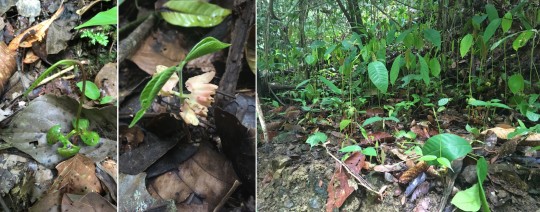
Figure 1. Seedlings at Danum Valley, Sabah, Malaysia, October 2019.
One of my favorite forest phenomena is masting. Trees in the family Dipterocarpacae dominate SE Asian rainforests. These are the world’s tallest rainforest trees, reaching more than 90 meters in height, and they reproduce by masting, which are irregular fruiting events. In northern Borneo, there is no set wet or dry season; rain falls year-round but there are sporadic dry periods that vary from year to year. Thus, there is no regular spring/flowering season like we have here in the US. Instead, the Dipterocarps reproduce in masting events, usually following strong droughts. The reason animal ecologists get excited by these masting events is because during these periods the forest seems to explode with life. The first time I went to one of my field sites (Danum Valley) was during a masting event (2010), and I had no idea how rare and special it was. I thought that it was normal to see two clouded leopards eating a mouse deer, or to see orangutans pretty much every day, or to have elephants tip over your car while you’re out surveying frogs (true story!). In the following years, I realized how incredible it was to have been there at that time. I was a little sad that my chances of seeing another masting event were low, but I got lucky again in 2019 when I spent a month at Danum during its most recent masting year.
As a herpetologist, I admit that I don’t fully appreciate all of the botanical intricacies of masting. But the most visually noticeable thing about a masting event is that it makes the forest look as though someone has planted thousands and thousands of seedlings all over the forest floor. This is incredibly striking because much of the forest doesn’t normally have a lot of undergrowth, but rather widely spaced giant trees. It would be like seeing the redwood forest with seedlings blanketing the forest floor. I have a ridiculous number of pictures of both the forest floor and individual seeds and seedlings in an enormous variety of shape and size, and will gladly bore anyone willing to look at them.

Figure 2. Borneo short python (Python breitensteini), caecilian (Ichthyophis sp.), and palm civet (Paradoxurus philippensis).
As I mentioned above, masting events also bring out heaps of animals that I don’t often otherwise see. In my first week, while setting up an introduction to electro-fishing for my students, we saw an orangutan about 30 meters away. He then came down to the forest floor, crossed the stream a little ways up from us, and walked off into the forest on the other side. Later that afternoon as I was setting up the exercise on a different stream, a lizard known as a water monitor (Varanus) was swimming downstream toward us, got spooked up onto shore by our presence, and ran right into the mouth of a concealed king cobra--!! While we couldn’t see the cobra’s full body, we clearly saw its unmistakable head scales as it was pulling the Varanus back into its hiding spot, and heard the incredible growl that cobras let out when they don’t want to be bothered. The rest of the month saw numerous species of snakes, a giant softshell turtle, my 4th ever caecilian (a limbless amphibian), mom and baby civets (a small carnivorous mammal), and in keeping with the field session’s mission, awesome frog data collected together with my students. While these animals are always present in the forest, masting events seem to bring them out in force, making all of them much easier to see.
As we start 2021, I am cautiously hoping that this year will see us all getting vaccinated, making travel safe once again. I hope to return to Borneo for more incredible encounters alongside my regular data collection, to better understand the incredible forest that hooked me into tropical field ecology in the first place.
Jennifer Sheridan is Assistant Curator in the Section of Amphibians and Reptiles at Carnegie Museum of Natural History. Museum employees are encouraged to blog about their unique experiences and knowledge gained from working at the museum.
38 notes
·
View notes
Photo

Photo: Johnson - flickr
Asian Palm Civet
Paradoxurus Hermaphroditus
The Asian palm civet is a smaller species of civet found throughout the jungles of Asia, and easily recognisable by its dark, coarse hair and large eyes. The Asian palm civet is also known as the common palm civet and the Toddy Cat is areas where the Asian palm civet is natively found.
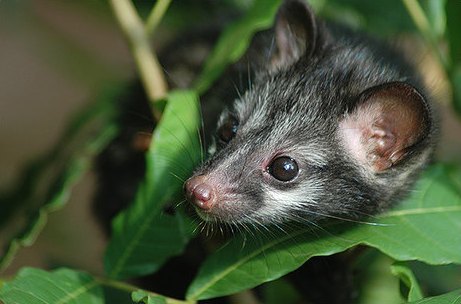
Photo: gaminivijithsamarakoon - flickr

Photo: Giovanni Mari - flickr

Photo: Praveenp - flickr
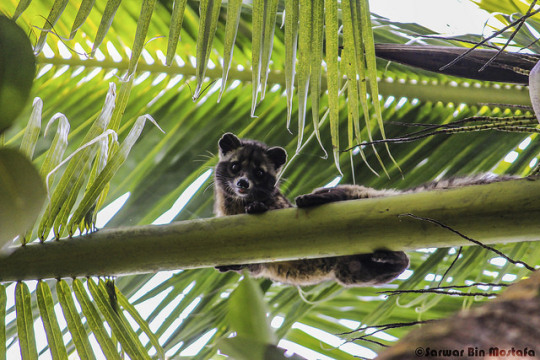
Photo: Sarwar Bin Mostafa - flickr
3 notes
·
View notes
Photo
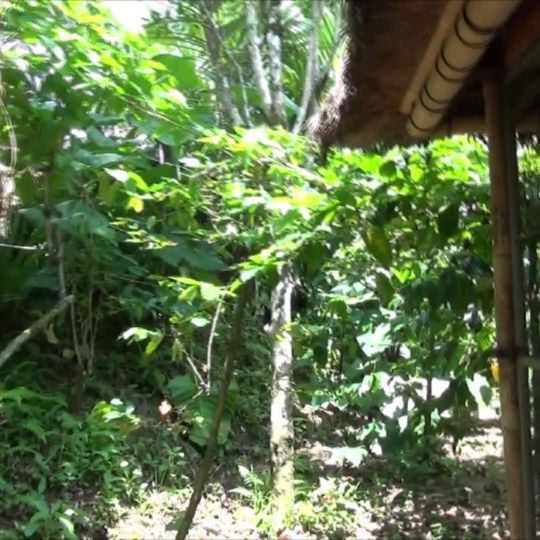
Бали, Индонезия. Bali Pulina кофе лювак (или лувак или kopi luwak) или Какашкин кофе Процесс производства зёрен кофе копи-лювак состоит в том, что мусанги (Paradoxurus hermaphroditus, зверёк семейства виверровых) поедают спелые плоды кофейного дерева (кофейные вишни), переваривают окружающую кофейные зёрна мякоть и испражняют зёрнышки кофе, которые затем собираются людьми, моются и сушатся на солнце. Копи Лувак - один из самых дорогих сортов кофе в мире: его стоимость порядка 550 евро / 700 долларов за килограмм. #trip✈️ #traveling #travel #bali #bali🌴 #бали #бали2019 #путешествия #полетели✈️ #путешествияпомиру #путешественник in#путешествие #самостоятельноепутешествие #островбали #островбали🌴🌊 #островбали2019 #островбалирайназемле #островбали🌴💋 #островбали🌴 #островбали#вокругсвета #путешествие2019 #путешествиевокругсвета#путешествиепомиру #мирпутешествий #mirputeshestviy #путешествуйснами #путешествуйвместеснами #pulinabali #balipulina#kopiluwak (at Bali Pulina) https://www.instagram.com/p/B4x5iOsKAX5/?igshid=1wkyfliis7oe1
#trip✈️#traveling#travel#bali#bali🌴#бали#бали2019#путешествия#полетели✈️#путешествияпомиру#путешественник#путешествие#самостоятельноепутешествие#островбали#островбали🌴🌊#островбали2019#островбалирайназемле#островбали🌴💋#островбали🌴#вокругсвета#путешествие2019#путешествиевокругсвета#путешествиепомиру#мирпутешествий#mirputeshestviy#путешествуйснами#путешествуйвместеснами#pulinabali#balipulina#kopiluwak
1 note
·
View note